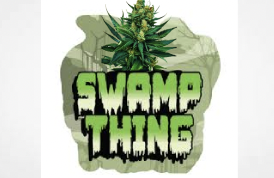If deep dives into cannabis taxation methadologies is your thing then this post by Ruth Fisher is a must read
She writes
General Note on Cannabis Taxes
Comparisons of Alternative Forms of Cannabis Taxes
Germany’s proposed cannabis regulations have been in the news recently.[1] They include a THC-based potency tax, that is, higher tax rates for products with higher THC content. These potency taxes differ in form from the excise taxes most commonly seen in the US, price-based excise taxes.
Taxes are an unfortunate part of life, and a much larger part of life in the cannabis industry than in most other industries. Besides being a burden, though, taxes also change consumers’ behavior. This fact leads me to wonder: What are the different tax systems currently being used across cannabis markets, and how will the different systems affect consumer behavior?
General Note on Cannabis Taxes
Governments use taxes either to dissuade consumers from purchasing taxed products and/or to generate revenues from their sales. The tax revenues may be used to offset social costs associated with the consumption of taxed products.[2] Alternatively, tax revenues may be used to promote related social programs.
All the different forms of taxes – excise taxes, state and local sales taxes, social equity taxes, etc. – increase consumer prices in legal markets, making it difficult for legal businesses to survive,[3], [4] driving many consumers to Black Markets.[5],[6] This is an unpleasant reality that legislators must understand when establishing cannabis tax structures and regulations.
Many regulators reason that taxes on cannabis will dissuade underage users from consuming cannabis. Yet, underage minors are already banned by law from consuming cannabis. [7] Presumably, many (most?) get their cannabis products from black market suppliers. In this case, increasing the price of legal market cannabis products will not dissuade minors from continuing to use cannabis.
Also, while cannabis products cannot flow across state lines, cannabis consumers can. So then neighboring states must keep their total (tax plus product) prices in line with those in other states. Otherwise, they risk riving consumers to purchase products across state lines.[8]
Cannabis Tax Systems by State
Jackson Brainerd, Program Principal at National Conference of State Legislatures (NCSL), notes, “While robust revenue collections are typically associated with recreational marijuana sales, there are states that are generating a significant amount of revenue from medical marijuana programs as well.”[9] Since:
-
- The majority of tax revenues come from recreational (rec) use in states that have legalized both medical (med) and rec use;
- Med and rec regimes have different tax structures, which complicates any discussion of joint med and rec markets; and
- In all relevant respects, consumers in med only states respond to taxes in similar ways as consumers in joint med and rec states do,
I’m simplifying my analysis by focusing on rec states.
States with Uniform Price-Based Excise Taxes
All states that have legalized adult use (rec) cannabis have imposed both excise and/or sales taxes on cannabis activity. Most states – 15 of the 20 states that have legalized rec use – have imposed a uniform price-based excise tax. For example, both California and Colorado impose excises taxes on all dispensary sales to consumers of 15% of the product price, in addition to other state and local sales taxes.
Read the full article at
https://quantaa.com/blog/570-alternative-forms-of-cannabis-taxes
Other 2022 Articles include
Why Is Cannabis Such a Tough Nut to Crack? A Synopsis of Supply and Demand Complexities
Will High THC Cannabis Continue to Dominate Markets?


















